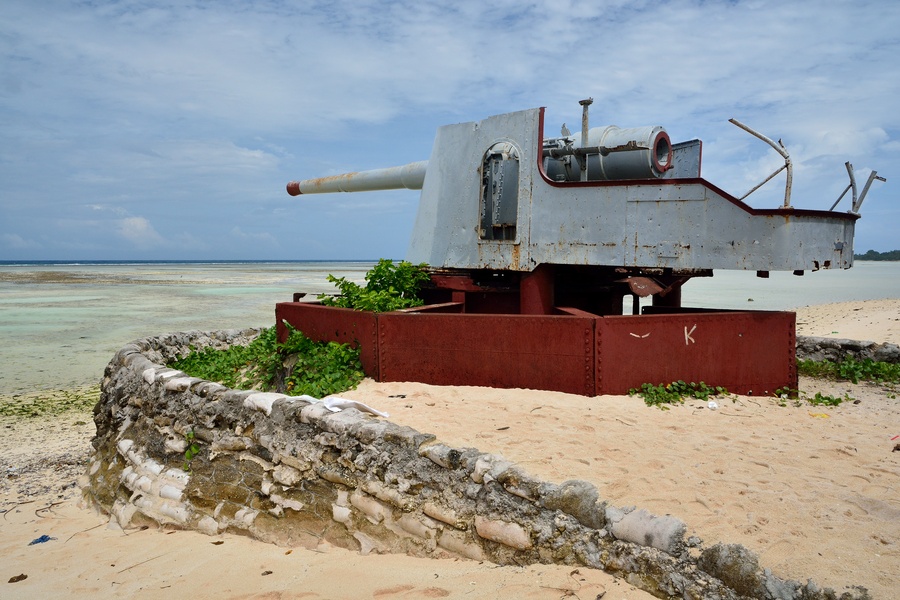Table of Contents
Introduction
The island nation of Kiribati is a remote Pacific paradise, with coral atolls surrounded by turquoise waters. Though beautiful, one island called Betio has a dark history from WWII. Betio was the site of the bloody Battle of Tarawa between US and Japanese forces in 1943. Today, Betio hosts a fascinating museum dedicated to preserving and showcasing that history for future generations.
Betio is located in the Tarawa atoll and was the location of a pivotal WWII battle. The Betio WWII museum commemorates that battle and provides insights into Kiribati’s complex role in the war.
History of Betio During WWII
The Battle of Tarawa was a major US amphibious assault launched in November 1943. The goal was to capture Betio Island from the Japanese as it had an important airbase. Fierce fighting raged for 76 hours amidst Betio’s beaches, lagoons and old naval base.
Strategically, Betio was key for the US to advance towards Japan. But the Japanese troops defended it vigorously, resulting in over 1,000 US casualties. Eventually the US succeeded in capturing Betio in a hard won victory.
Betio WWII Museum
To commemorate the history and sacrifices made at Betio, a museum was founded in 2002. Known as the Betio WWII museum, it aims to conserve artifacts and stories from the war.
The museum has informative indoor and outdoor displays detailing all aspects of Betio during WWII. Outdoors, there are restored Japanese bunkers, cannons, and large guns in the positions they were originally built. Indoors, there are dioramas of the beach landings, weaponry, and authentic artifacts from the battle with informative displays.
There are also guided tours led by knowledgeable locals who share oral histories passed down through generations. The tours provide context and anecdotes that truly bring the exhibits to life.
Additionally, great care is taken to preserve the artifacts against Kiribati’s humid, salty environment. The museum collaborates with experts worldwide regarding conservation.
Highlights of the Museum
Some of the most striking exhibits include:
- A restored Japanese Zero fighter plane used at Betio, displayed outdoors. Visitors can get up close to examine the plane.
- Amtracs or amphibious landing vehicles used in the Tarawa invasion, now restored and on display.
- Audio recordings and oral testimonies from WWII veterans recounting first-hand experiences from Betio. These provide chilling and insightful perspectives.
Visiting the Museum
The Betio WWII museum is located near the old naval base on Betio isle, Tarawa atoll. It’s open from 9am to 3pm weekdays, with varying weekend hours. The admission cost is about $5 for foreign visitors.
Helpful tips when planning a visit include bringing water/snacks, wearing sunscreen, and dressing modestly as Kiribati is a conservative culture. Ask questions of the guides and interact with the displays for the richest experience.
Impact and Significance
The museum has helped Kiribati preserve its complex WWII involvement for current and future generations. It ensures the sacrifices during the brutal Battle of Tarawa are honored and remembered.
In broader terms, the museum educates visitors about the realities of war and its human cost. It also highlights Kiribati’s key role in Pacific WWII operations.
Challenges and Future
As a small Pacific island nation, Kiribati faces funding constraints in sustaining the Betio museum. Operating costs, conservation efforts, and expanding exhibits require money and resources. There are ongoing partnerships with governments and organizations worldwide to overcome these challenges.
Maintaining the open air displays from harsh environmental elements like sun, salt and rain is also difficult. Conservation expertise is continually needed to refurbish and protect the artifacts.
There are hopes to expand the museum with a new wing highlighting Kiribati’s cultural heritage before and after the war. But this requires generous donors and partners to make it a reality.
Conclusion
The Betio WWII museum is a hidden gem, offering an immersive experience into a pivotal WWII battle. Visitors gain perspectives into the horrors of war and Kiribati’s brave role defending the remote Pacific. With its haunting artifacts and oral histories, the museum brings history to life while honoring the past. Supporting Betio’s growth will ensure that these vital stories are preserved for generations to come. The museum is a must-see for those interested in WWII history, Kiribati’s culture, or visiting unspoiled Pacific isles.
FAQ
FAQ 1: Where exactly is the Betio WWII museum located?
The Betio WWII museum is located on Betio Isle, which is part of the Tarawa Atoll in the Republic of Kiribati. Betio is about 3,000 miles southwest of Hawaii. The museum itself is situated near Betio’s old WWII-era naval base on the western tip of the isle.
FAQ 2: Can I take photos at the museum?
Yes, photography is allowed in the outdoor exhibits and most indoor exhibits at the Betio museum. Some restrictions apply for conservation reasons in sensitive areas, but visitors are generally encouraged to take photos. Tripods may need special permission. Always ask the museum staff if unsure about a particular area.
FAQ 3: Are there facilities and food available on site?
The museum has basic restroom facilities and a small gift shop selling snacks/drinks. But overall options are limited on Betio, so visitors should plan accordingly. Bringing extra water, snacks, etc is recommended. There are no cafes or restaurants directly near the museum.
FAQ 4: Is there a cost for guided tours?
The standard museum admission fee allows access to the full facilities, exhibits and regular guided tours. No extra cost for the tours. Visitors can tip their guide afterward if they choose. Small additional fees apply for special private or after-hours tours.
FAQ 5: Are displays wheelchair and disability accessible?
The Betio WWII museum aims to accommodate visitors with disabilities. The indoor exhibits and newer outdoor areas are designed for wheelchair access. Some historic bunkers and older areas may have limitations based on the original WWII construction. Contact the museum ahead of visit for questions on accessibility.
